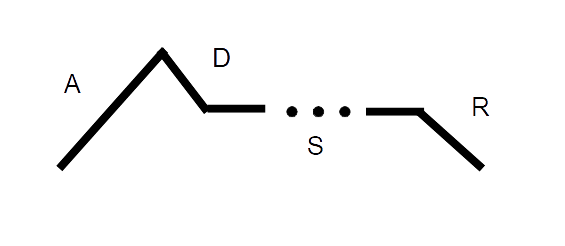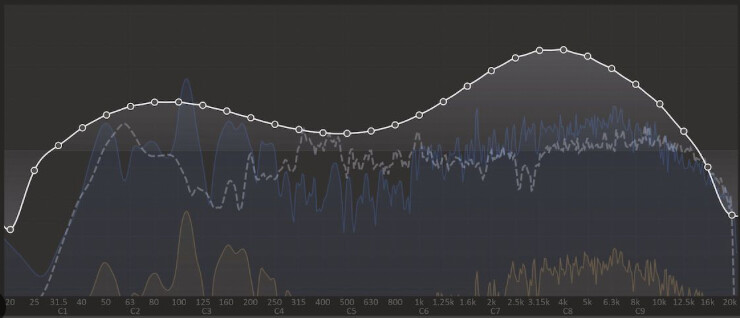Hey!
This is such a good idea.
If anyone out there has a word that gets thrown around that they remember being mysterious when they started - if you’re just starting and there are mysterious words being thrown around - make the list here!
Just write the word!
My goal is to collect all this and make a lovely glossary.
If you want to add a definition, that’s fine, though be warned - all definitions will be subject to edits!!
Fire away!
Good call. I’ll chip in the example I already gave, the ADSR model of sound amplitude shapes over time. Each letter is a separate phase of the sound:
-
Attack - phase covering the time the sound takes from its start to reach its peak. For pick and slap bass, this is very short. For fingerstyle, it’s short.
-
Decay - phase covering the sound between its peak, decaying down to the level it sustains at. This is very short for all bass techniques.
-
Sustain - phase covering the time the note rings out for while the note is held. For bass and guitar, this technically doesn’t exist, but we call the next phase “Sustain” in its place. On keyboards, it is the phase the key is held down for.
-
Release - phase covering the time the note is released to where it is inaudible. On bass we call this “sustain”, but some effects (and all synthesizers with envelopes) will call it “release”.
These terms are meaningless for day to day playing but are used all the time when you need to modify sounds. It is very common for compressors to have “Attack” and “Decay/Release” controls, for example. These control the time the compressor waits to start (or stop, respectively) compressing/limiting peaks.
i think “note” and “pitch” was confusing to me at first. if i play an A and then play an A one octave higher — that is the same note but a different pitch? (i may have that backwards?) to a layman it makes no logical sense — how can 2 sounds that are so different be the same? etc…
That’s a good one to cover. It’s not obvious at all to beginners that every time the frequency doubles (or halves), it’s the same note, just in a different octave.
Yes. For example, the root note and the octave note of a scale have two different frequencies (pitches), with the octave being either higher or lower on the scale than the root note.
And, yes, octave notes, wherever they occur in the scale, share the same note name as the root of a scale.
(I don’t think he was asking, I think he was suggesting adding “note” and “pitch” to answer the question for beginners)
I didn’t assume Mitch was. I was just responding to possible terms beginners might wonder about.
I thought this was chugging until I started playing Bass.

And you probably though “Chugging?! Hell yeah! Been doing it for the past 30 years!”
That type of chugging is how a drummer warms up for a gig.
@Gio if you’re going to write a glossary, I think you should include the names of the parts that make up a bass guitar. Bridge, saddles, body, neck, nut, headstock, things like that.
A concept I’m still having difficulty with is “envelope”… I know it’s related to ADSR, like @howard explained, but I still can’t quite get my head around it.
Oh, and tonal qualities such as “punchy” or “growl”… Those just don’t make any sense to me at all ![]()
An Envelope is a shape that is used to modulate - a fancy word for “alter” - or describe the modulation of other things. An ADSR is indeed a very common form of envelope - its shape describes the amount of modulation applied to the sound over time:
For example, a fast attack and delay, followed by a long release, would be one way to describe slapping or picking and letting the note ring out.
Another envelope type most people are familiar with is a graphic EQ. Instead of describing the modulation over time, an EQ shape is basically an envelope in the amplitude versus frequency domain. Graphically, the way that would look as an envelope and shape the sound is like this, with each dot on the white line basically being a slider on your EQ, and the line being the overall shape of how that EQ setting will alter the sound:
Similarly, another type of envelope would be a filter viewed as the amplitude versus frequency. Each of the filter types has a characteristic shape when looked at it that way. For example, this is a Low Pass filter shape:

As you sweep the filter lower in frequency (to the left in that image) it filters out more and more high frequencies. This is what your tone knob does. Rolling off the tone moves that shape to the left and cuts out more high frequencies.
All of these are envelopes of different types.
Some folks mistakenly use the word “dampen” when referring to muting a string or other sonic vibration.
The actual term is “damp,” as in:
“Use your thumb to damp an adjacent open string.”
The term “dampen” means to make something wet.

